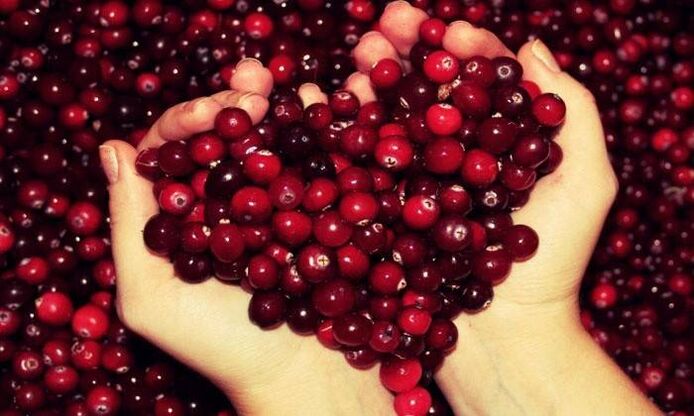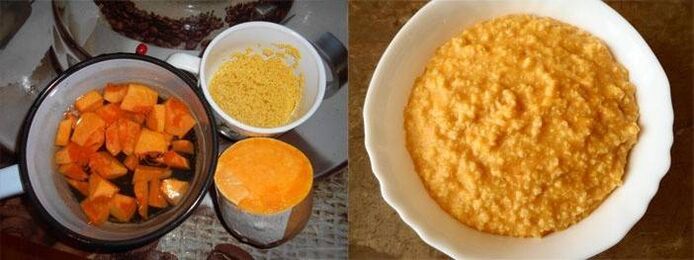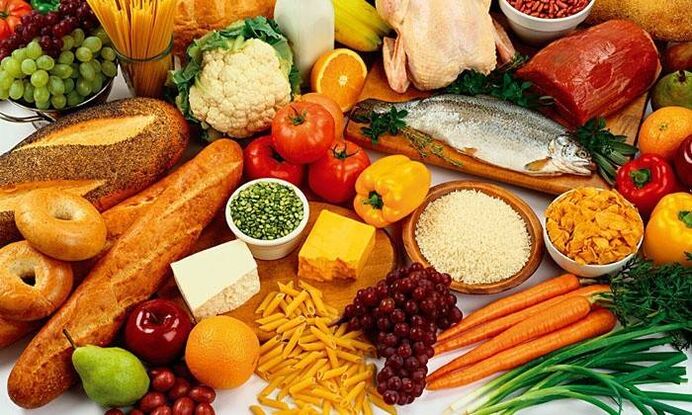Psoriasis is a dermatological non -communicable disease that quickly becomes chronic. During the period of psoriasis exacerbation, a flaky and prominent rash appears on the surface of the skin, causing a lot of discomfort. Special areas of psoriasis are the knees, elbows, scalp. The spread of the disease occurs throughout the body. Diet for psoriasis can reduce the course of the disease. Statistics say that 70% of sick people are young people under the age of 20, but really all age categories are prone to psoriasis.
Eating rules for psoriasis
The diet for psoriasis is a medical diet, which is recommended to be adhered to to prevent recurrence in patients. Patients with psoriasis need to monitor their emotional state, check the function of the stomach and the entire gastrointestinal tract, eat in small doses (at least five times a day), eliminate allergens, and increase the amount of fluid consumed. Daily stools are an unshakable rule for patients with psoriasis. Food stagnation in the body contributes to the increase of psoriasis.

To maintain proper water balance in psoriasis, you must:
- Drink 1. 7-2 liters of purified water daily with the addition of a small amount of lemon juice.
- Reduce your intake of green and black tea. Increase the amount of infusion of herbs, especially chamomile, flaxseed decoction.
- Include fresh juices (carrots, spinach, celery, apples, parsley, beets) in food.
Basic cooking rules for psoriasis:
- Eliminate fried and fatty foods from the menu. A special place is occupied by dishes boiled, steamed or baked in food casings.
- Reduce the amount of salt.
- Increase intake of fermented dairy products, preferably homemade.
- Limit the amount of seasoning for your food. For health benefits, replace with lemon juice or a specially prepared sauce (yogurt + herbs + garlic + mustard).
What can and cannot be eaten by psoriasis patients?
Diet for psoriasis shows complete control and adherence to the basic rules of a healthy diet. A small number are able to limit themselves, abandoning their favorite foods, but in the period of exacerbation of psoriasis - this is a difficult requirement. The disease is not completely cured. The course cannot be changed by using only medications and not adhering to dietary treatment. Knowledge of which food products are allowed to be consumed, which must be completely excluded during psoriasis exacerbation, can reduce patient well -being, and reduce major symptoms.
List of allowed and prohibited products
With psoriasis, you need to follow these dietary rules:
- Eat more vegetables (lettuce, parsley, dill, green onions), fresh fruits, greens. They contain an entire storehouse of vitamins.
- Eat boiled or steamed fish more often (salmon, salmon).
- Eat plenty of porridge - buckwheat, rice, oatmeal, wheat or anything else.
- Add vegetable oils that contain PUFAs to food.
- Saturate food with lingonberries or blueberries. These little balls have long been considered the main leaders for relieving the symptoms of psoriasis.

People with such diseases should be excluded from the diet or reduced:
- Intake of coffee, strong tea.
- The amount of fatty meat.
- The amount of alcohol consumed.
- Intake of spicy or salty spices, vinegar.
- The amount of honey, sugar, baked goods eaten.
- Strong portion of meat broth, sauce in the diet.
- Eat any smoked product.
Sample menu for the week
After compiling a diet menu for a week (5 days), it is easier to see which foods to buy, and to avoid emergency snacks with foods that are forbidden for psoriasis. Diet in the treatment of psoriasis is important. Failure to comply with it exacerbates the course of the disease. Remember to drink 1 glass (or more) of purified cold water between meals. Dinner should be no later than three hours before bedtime.
Monday
- Breakfast - buckwheat porridge + a little butter + dried fruit. Weak tea with slices of hard cheese.
- 2nd breakfast (after 2 hours) - apples, bananas or other fresh fruit that does not cause allergies.
- 3rd breakfast (after 2 hours) - cottage cheese seasoned with low -fat sour cream + fruit.
- Lunch-salad (fresh vegetables + a tablespoon of olive oil), vegetable soup, side dishes with low-fat boiled meat, bread.
- Afternoon snack - fruit.
- Dinner - porridge with boiled vegetables + bread. After 1. 5 hours, kefir + low -fat cookies.
Tuesday
- Breakfast - oatmeal with raisins and a slice of butter, bread, 1 glass of rosehip drink.
- 2nd breakfast - low -fat kefir.
- 3rd breakfast - fresh fruit.
- Lunch - salad (fresh vegetables, dressed with olive oil and lemon juice). The second chicken soup soup. Saute with steamed fish pieces. Bread.
- Afternoon snack - cottage cheese with fresh fruit, seasoned with yogurt.
- Dinner - buckwheat porridge with butter without meat + steamed vegetables.
Wednesday
- Breakfast - two -egg omelet. Cocoa sandwich, butter and hard cheese.
- 2nd breakfast - fresh fruit.
- 3rd breakfast - a glass of kefir.
- Lunch - salad with fresh vegetables + salad dressing (greens, mustard, lemon juice, olive oil, garlic). Borscht with beef gravy. Rice porridge with steamed pieces of meat. Bread.
- Lunch snack - a number of baked apples.
- Dinner - vegetable stew. A slice of rye bread.
Thursday
- Breakfast - low -fat cottage cheese seasoned with sour cream + raisins. A glass of freshly squeezed juice.
- 2nd breakfast - fresh fruit. Compote with dried fruit.
- 3rd breakfast - 1 boiled egg.
- Dinner - ears. Steamed chicken pieces + vinaigrette. Bread. Herbal chamomile tea
- Afternoon snack - dried fruit compote. Marshmallows without chocolate.
- Dinner - a piece of steamed salmon + oatmeal with a piece of butter. Bread. Weak green tea.
Friday
- Breakfast - pumpkin milk porridge with dried apricots and raisins. Bread. Compote with dried fruit.
- 2nd breakfast - freshly squeezed juice + scrambled eggs from 2 eggs.
- Lunch - mashed zucchini soup. Pilaf, not fried. Bread. Boil Rosehip.
- Afternoon snack - a glass of yogurt (baked milk or kefir) + two baked apples.
- Dinner - curd casserole. Compote or chamomile tea.
Diet recipes
Cottage cheese casserole
Prepare 1 kg of low -fat cottage cheese + 4 eggs + 1 cup semolina + half a cup of steamed raisins + 5 tbsp. l. sugar + a pinch of salt and vanilla. Rub the cottage cheese thoroughly through a sieve, add the beaten eggs with sugar, mix. Pour the semolina, salt, vanilla into the curd mass. Stir with a spoon or mixer, leave for half an hour. Place the resulting mass on an oily form. Bake with or without the lid closed (about half an hour at medium temperature). Let the casserole cool before use. Healthy desserts throughout the diet are ready.
Milk pumpkin porridge with raisins is a healthy sweet dish for psoriasis patients

You will need: half a kilogram of pumpkin, 2/3 cup of rice, half a liter of milk, half a glass of raisins, salt, sugar, vanillin to taste. Peel a squash from the seeds and skin. Cut into small cubes or strips. Pour half with water. When soft, knead well, pour the milk. Add the prepared rice (soak 2 hours in advance, rinse), salt, sugar. Pour in the raisins and washed vanilla 15 minutes before turning off. Put a piece of butter into the ready -made porridge. Put in the oven for 15 minutes - the dish will be more aromatic and tender.
Zucchini soup with hard cheese
To prepare a soft spring soup, you need:
- 1 liter of purified water;
- 2 zucchini (length up to 20 cm);
- 5 pieces of potatoes;
- 1 teaspoon finely grated ginger claws;
- hard cheese (1 tbsp. l for each serving);
- 1 tbsp. olive oil;
- fresh or dried herbs (parsley, dill, celery);
- salt to taste;
- spices (bay leaf, cardamom).
Pour the chopped potatoes and zucchini into the boiling water. Squeeze the coriander, mash in a mortar, grated ginger for 30 seconds. Put with ready-made vegetables, boil for 1 minute, turn off the heat. Drain excess liquid into a separate bowl. Grind the boiled vegetables with a blender, add the vegetable gravy gradually until the desired consistency is obtained. Add salt and herbs. Bring to a boil, turn off. Soup-puree, laid out in a portion plate, sprinkle with grated cheese to taste. The first meal for the patient's diet is ready.
Oatmeal with dried fruit
A quick and useful dish for psoriasis patients is oatmeal. You need to take half a glass of oatmeal. Pour into boiling water (1 cup), add raisins, dried apricots or other dried fruit (fresh or frozen fruit), salt, sugar to taste. Put out the fire. Add a piece of butter. Leave on for up to 15 minutes. The breakfast or dinner diet is ready.
Principles of nutritional therapy according to different methods
A common diet used to treat people with psoriasis is the Pegano method. Two nutritionists agree that to prevent recurrence and worsening of the condition, psoriasis patients should maintain the body’s acid-base balance in a ratio of 20% to 70% or 30% to 80% and follow the basics of proper nutrition. Let’s take a closer look at both diets.
According to the method of Pegano
John Pegano has developed a dietary treatment for psoriasis patients in which vegetables and fruits are grouped to help regulate acid-base balance. He believes that raw apples, bananas, and watermelons are best eaten in small doses, separate from other food elements. A small amount should be eaten currants, plums, avocados, peas, cranberries, dried beans, mushrooms, prunes, lentils, rhubarb, almonds, hazelnuts. It is best to drink 1 tablespoon five days a week. l. lecithin (granular). After eating, a slight feeling of hunger must be present.

In his diet for psoriasis, up to 80% of the foods eaten include:
- purified water (up to 8 cups a day), in addition to other liquids;
- fruits, vegetables, but not canned. Baked apples, dates, apricots, figs, raisins, kiwi, mangoes, pears are very useful for patients with psoriasis. Vegetables - asparagus, carrots, cabbage, beets, celery, onions, olives, pumpkin, zucchini. This is the basis of dietary nutrition for psoriasis.
About a third of the diet of patients with psoriasis is:
- cereals in the form of cereals - buckwheat, millet, oatmeal, barley, rye;
- whole wheat bread, bran, dry bread, bean sprouts;
- fish dishes (at least four times a week): tuna, cod, catfish, perch, sturgeon, trout;
- poultry - up to three times a week (without skin);
- meat (lean lamb) - up to twice a week;
- skim milk, fermented milk products, butter, cheese, cottage cheese;
- eggs (only hard boiled or soft boiled) - up to four times a week;
- boil chamomile seeds, watermelon seeds, mullein.
Treatment of patients with psoriasis with a diet according to the method of Pegano does not include a combination of each other:
- whole grains with citrus fruits (not only fresh, but also dried, boiled) and juices;
- dairy products with citrus fruits, juices;
- all kinds of fruits with white flour products;
- in one meal a large number of foods form acids.
According to the method of a dietitian
In the treatment of psoriasis with diet, other nutritionists combine foods with herbal ingredients. According to his method, the diet does not include all citrus fruits (except grapefruit), strawberries, nuts, raspberries, avocados, strawberries, pomegranates, lentils, peas. Grapes are allowed (in small amounts), cabbage (any portion). Green beans, zucchini, carrots, broccoli, garlic, onions, spinach, cucumbers, pumpkins are recommended to be eaten with short breaks. Bananas, watermelons, and raw apples are eaten separately from other foods. They drink mineral water every day.























